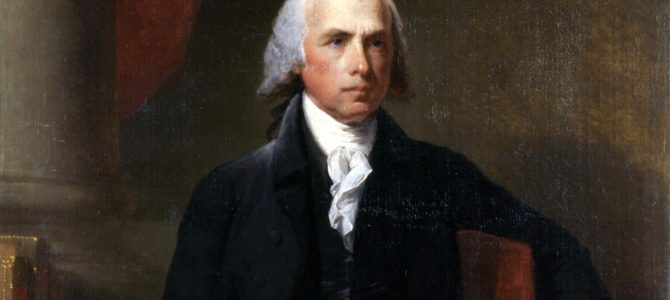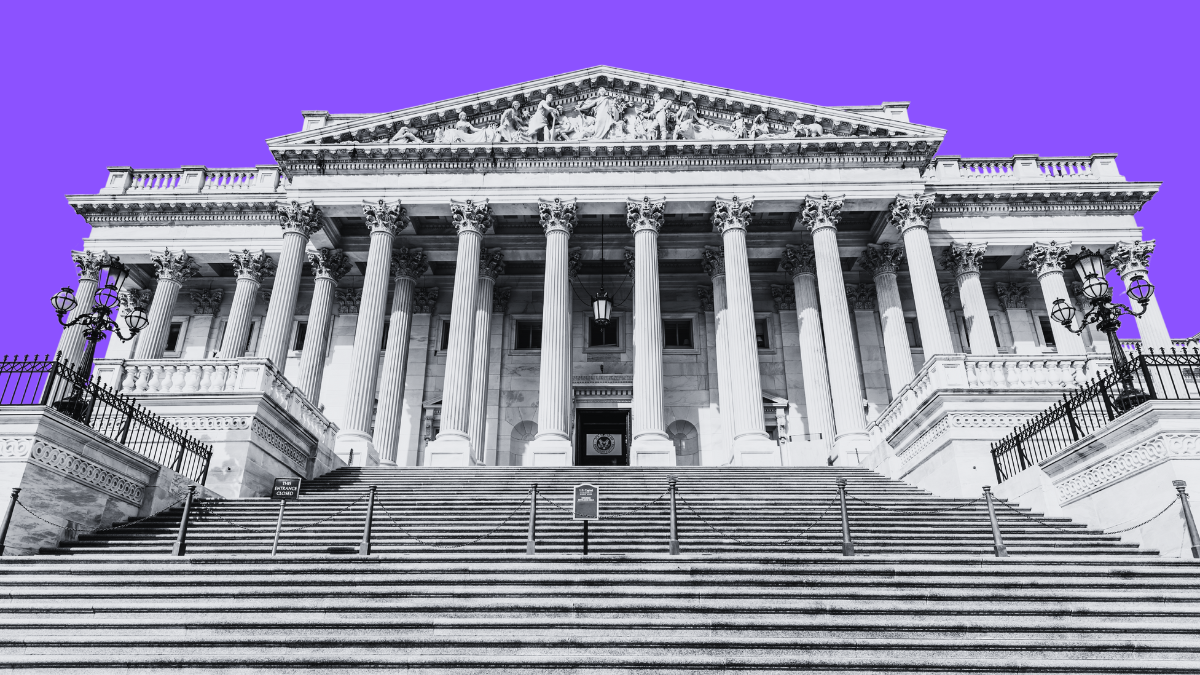
There has never been a time our nation wasn’t divided by partisanship. Yet some eras are more divisive than others, and few of us would deny that we’re living through an especially polarized time. For those who don’t trust their instincts on this question, numerous surveys bear out a collective hunch: polarization really has gotten worse in recent decades.
We don’t lack for probing examinations of the causes. Ezra Klein blames modern social and news media. Charles Murray notes that ordinary class divisions have become intensified through American “super zips.” Some studies blame the nationalization of local politics, while others suggest that even our leisure activities are exacerbating political divides. Predictably, each side blames the other for increased radicalization within their respective political parties.
While many of these studies provide genuine insights into our current condition and how we got here, too few have grappled seriously with the most pressing question: How do we get beyond the hyper-partisanship? Lessons drawn from our preeminent constitutional founder James Madison might prove helpful.
At first blush, Madison might seem like an unlikely Sherpa to guide us on this quest. In the first place, his most famous argument, found in “Federalist” Number 10, teaches that “the latent causes of faction” are not situational but “sown in the nature of man.” Since a factious tendency in free governments cannot be overcome, he says, we must accept “the spirit of party and faction in the necessary and ordinary operations of the government.”
In the second place, Madison played no small role in establishing the first organized political party in the young republic. He first coined the phrase the “Republican Party,” and while serving as an apparatchik for the Jeffersonian Republicans, he often succumbed to the same partisan fervor we complain about today.
Yet Madison remains a valuable object lesson for these very reasons. First, it is precisely because he knew that factions could not be removed from a free government that he actively sought ways to defang them to render them less destructive.
Second, it is not Madison’s most partisan activities that teach us how to get beyond polarization, but the arc of his whole life and career. Madison’s earlier operations were one reason the 1790s have been characterized as a “decade-long shouting match.” Yet he retired from the presidency in 1817 in what was widely regarded as an “era of good feelings.”
In other words, Madison not only lived through one of the worst epochs of American partisanship but also helped lead the country past that unruly epoch and into greater harmony. That’s why his lessons are worth examining today.
Lesson 1: Teach Classical Rhetoric to America’s Youth
Some polls indicate that support for free speech is declining in America, especially among the young. Such polls tend to gauge young people’s tolerance for speakers they find offensive. But if today’s students believe that protecting “hate speech” (whatever that means) is the only purpose of the First Amendment, we shouldn’t wonder or even blame them if their support for free speech erodes. It’s not a bad sign that they prefer civility to barbarism.
The greater “free speech” scandal is the one that nobody talks about: that most colleges and universities aren’t teaching their students the purpose of free speech. Even college graduates have never been taught that the point of tolerating clashing opinions is the pursuit of truth. For too many, their expensive educations have kept them ignorant of the rational arts of political persuasion. They are taught to assume that all judgments are subjective and can’t be held to rational evaluation, discussion, and debate.
It wasn’t so long ago that an education in classical rhetoric was deemed an essential part of enlightened self-government. When Madison attended Princeton University, he heard lectures on “Moral Philosophy, Rhetoric, and Eloquence” from none other than John Witherspoon.
Madison’s interest in the subject outlasted his college days. In 1784, he ordered a copy of Hugh Blair’s popular “Lectures on Rhetoric and Belles Lettres.” “True rhetoric and sound logic are very nearly allied,” argued Blair. The proper study of rhetoric is much more than the artistic arrangement of words; it “teaches to think as well as to speak accurately.”
It’s not fair to castigate today’s students as “snowflakes”; they’ve never been taught a better alternative to disinviting, protesting, or shouting down campus speakers who challenge their presuppositions. If the standard curriculum included classical rhetoric, they would be equipped to engage logically with speakers expressing diverse viewpoints — to discover for themselves whether their visitor was a sophist or a Socrates, or something in between. Even better, their taste in speakers might become too refined for the most inane of the campus rabble-rousers.
Lesson 2: Find Creative Ways to Encourage Both Sides of Every Argument
Throughout his life, Madison retained great faith in the power of the free press to remedy the evils arising from “fake news,” as we call it today. Despite the persistence of such “abuses,” Madison believed that “the world is indebted [to the press] for all the triumphs which have been gained by reason and humanity, over error and oppression.” If one paper published “falsehood and slanders,” these untruths could be corrected “in a certain degree, by contradictions in rival or hostile papers.”
Nevertheless, Madison was not naïve. He understood that “the one-sided publications which happen to predominate at particular periods” created a “delusion” in the minds of people who encountered only perspectives that reinforced their own opinions. He whimsically suggested that the perfect solution might be an arrangement whereby each sheet of newspaper was printed on one side by a press representing one party, then printed on the other side by its rival. That way, readers could not avoid “both sides of every question,” and “truth would always have a fair chance.”
Given the insularity and nasty tone of today’s media “bubbles,” Madison’s suggestion might require further refinement. Currently, both sides in the political debate are writing in such polarizing fashion that a media diet that included listening to the other side’s overheated polemics would not likely moderate or broaden anyone’s opinions. Studies have shown that the experiment may have the opposite effect.
Far more constructive would be publications or events designed to engage opposing sides in a format that encouraged civil disagreement. Instead of promoting free speech on college campuses by inviting the most polarizing or even inflammatory speakers, universities should be encouraging more bipartisan debates.
Robert George and Cornel West are two academics with sharply contrasting political opinions, yet they have teamed up to encourage students to challenge their preexisting beliefs in a spirit of “civic friendship.” This example, all too rare today, is surely worthy of emulation.
Lesson 3: Socialize with Your (Political) Enemies
In the early republic, members from different parties lived in separate boarding houses and rarely met for any purpose other than waging political battles. When he was president, Thomas Jefferson would host a dinner with Federalists on one evening and invite only Republicans the next.
Madison’s administration established a social change in the nation’s capital — one owing perhaps more to the president’s vivacious and charming first lady. Dolley Madison instituted regular Wednesday “drawing-room nights” at the White House, and everyone was invited. Her nonpartisan parties became so popular that they were known as “squeezes.” One guest, Pennsylvanian Rep. Jonathan Roberts, observed: “By her deportment in her own house you cannot discover who is her husband’s friends or foes.”
Of course, partisan rancor did not magically disappear over whipped syllabub and ice cream, but it was softened. One may disagree, vehemently, with a dining companion, but it becomes harder to demonize him.
Even in the spring of 1812 — when a looming presidential election and the possibility of war were fraying everyone’s nerves — Dolley’s charm offensive made hyper-partisanship socially awkward. The Federalists tried to boycott her soirées but changed their minds when the Republicans surged into her drawing-room in greater numbers. The festive crowds representing only the president’s party, she reported, “alarm’d” the opposition party “into a return. They came in a large party last night also & are continuelly calling.”
Today, anecdotal evidence suggests that politicians in Washington have reverted to the worst tendencies of the early republic: they rarely socialize with members from the other party. Some evidence suggests that female politicians are more likely to socialize across party lines or reach across the aisle politically, but other studies dispute that characterization. In any case, the country would benefit from more examples of Dolley Madison’s nonpartisan social graces – whether it comes from the gentlemen or the ladies.
Lesson 4: Never Allow Political Disagreements To Get Personal
In Madison’s day, it was taken for granted that gentlemen did not cast personal aspersions against their adversaries. This rule was not universally observed, of course; contemporaneous newspapers were infamous for their personal invective. But the ruling elite tended to hold itself to a higher standard than the scandalmongers.
In his public speeches, Madison could be a forceful voice for his political party, but he never allowed his criticisms to get personal. Toward the end of his life, Madison grew even more scrupulous: he actively concealed the faults he discerned in others.
Dolley explained his editorial practice when preparing his private papers for publication: “He desired me to read them over, and if any letter, line, or word struck me as being calculated to injure the feelings of any one, or wrong in themselves, that I would withdraw them or it.”
Madison’s surviving correspondence is often stamped with clues revealing this editorial license. In the most humorous instance, Madison had originally written in code to Jefferson that the Marquis de Lafayette was “as amiable a man as his vanity will admit.”
Years later, when reviewing that letter, he evidently regretted the ungenerous sentiment. He blacked out the original code numbers and wrote over Jefferson’s decoded sentence — even imitating Jefferson’s handwriting as he did so — in order to render the sentence: “I take him to be as amiable a man as can be imagined.” Madison’s earlier correspondence probably contained many more cutting remarks that we will never discover because he did a thorough job of scrubbing them before his papers were published.
Madison’s active avoidance of all personal affronts, even during political disagreements, is a standard of conduct sadly foreign to today’s political discourse. Yet ad hominem is listed among the logical fallacies for a reason: it never improves our political understanding but invariably poisons our political atmosphere.
But the fact that Madison needed to remove acerbic remarks from his earlier correspondence shows that he did not always abide by his highest standards. And that fact reminds us of the most important lesson of all.
Lesson 5: Repentance
As Madison grew older, he eventually regretted some of his youthful excesses. Particularly when the younger Madison wrote privately or anonymously (his “Party Press” and “Helvidius” essays were the anonymous blog posts of their day), he sometimes stooped to accusing his political adversaries of malevolent intent.
Madison later described feeling “consciousness & regret” over those earlier compositions. Although he did not repent the positions he had defended, he thought these essays breathed a party spirit “which was of no advantage either to the subject, or to the Author.” Struggling to give an account of one broadside in his 1790s oeuvre, he wrote: “The temper of the pamphlet is explained if not excused by the excitements of the period.”
One of the biggest problems with a hyper-partisan era is that it produces excitements that tempt even capable and well-meaning individuals into misbehavior that they might spurn in better moments. Madison was right: there is no excuse for such vitriolic behavior. Ultimately, the only recourse is regret, remorse, and a resolution to do better in the future. Unless our political and thought leaders adopt this lesson and reconsider their own contributions to today’s toxic political climate, there is no hope for improvement.
The stakes are high since the surest and most final way to resolve polarization is through armed conflict. The most hyper-partisan era in our history, after all, was not the 1790s; it was the 1850s, which ended in the Civil War. Every civil war is simply partisanship that got out of hand.
Republished from RealClearPublicAffairs, with permission








